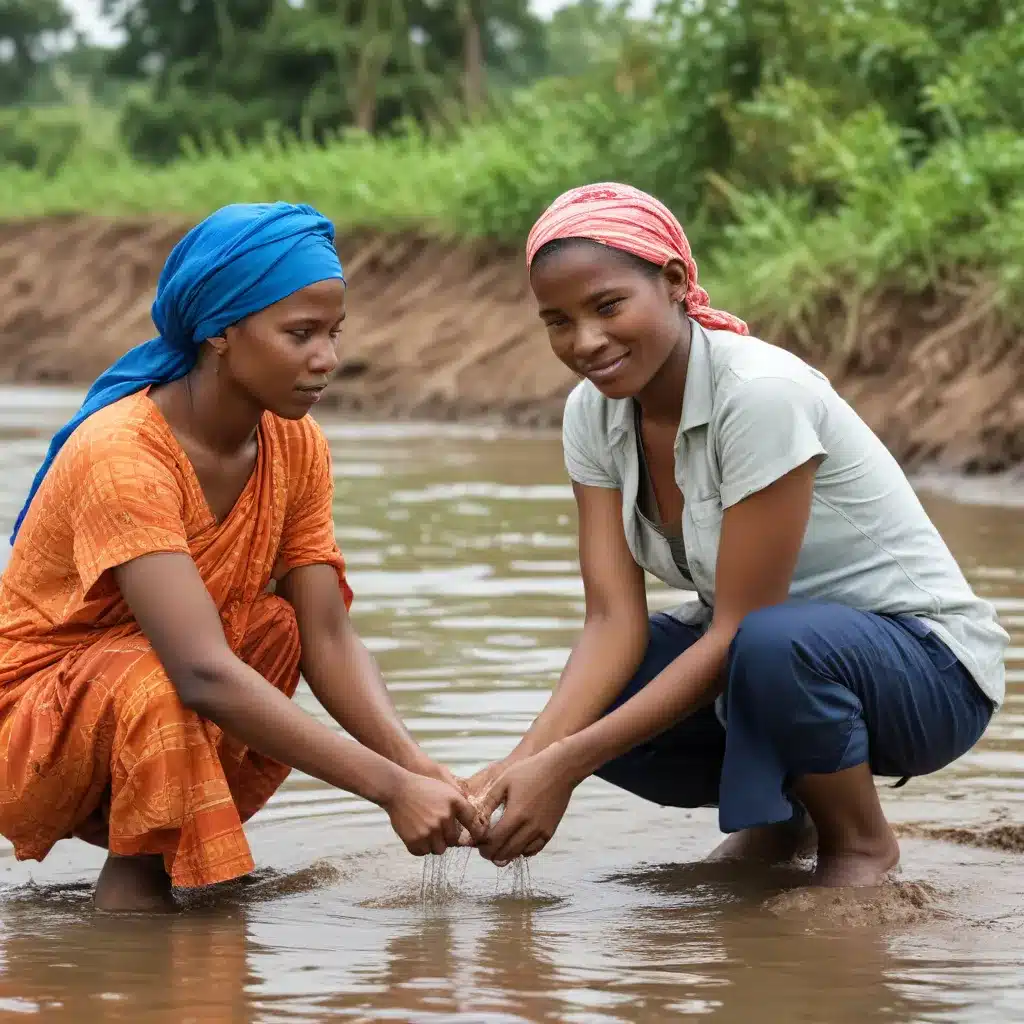
The Imperative of a Gender-Responsive Approach
The importance of integrating a gender perspective in the water sector cannot be overstated. Gender influences how individuals, especially women and girls, access and utilize water resources. Recognizing and addressing these differences is crucial for ensuring equitable distribution and maximizing the benefits for all community members.
Women’s Empowerment in Water Governance: In many societies, women are the primary managers of water resources. Empowering women in water-related decision-making processes enhances their agency, contributing to broader community development and resilience. When women are involved in water governance, solutions become more holistic and sustainable, as diverse perspectives and experiences are incorporated.
Health, Hygiene, and Climate Resilience: Women often bear the responsibility for family health and hygiene. Improved water access translates to better sanitation and health outcomes, reducing the burden on women and positively impacting overall well-being. Furthermore, as climate change exacerbates water scarcity, women’s vulnerability increases, highlighting the need for gender-responsive adaptation strategies.
Economic Opportunities and Education: Enhanced access to water can create economic opportunities for women. When involved in water-related projects, women can develop skills, generate income, and contribute to overall economic growth. Conversely, the burden of fetching water often falls on girls, affecting their ability to attend school. Improving water infrastructure can alleviate this challenge, promoting girls’ education and gender equality.
Mainstreaming Gender in Global Frameworks
The importance of women’s participation in water management has been recognized at the global level, starting from the 1977 United Nations Water Conference at Mar del Plata to the more recent Johannesburg Plan of Implementation and the International Decade for Action, ‘Water for Life’ (2005-2015). These frameworks explicitly call for women’s involvement in water-related development efforts.
Gender mainstreaming, defined as the process of assessing the implications for women and men of any planned action, has become a widely accepted strategy for achieving gender equality in the water sector. The United Nations Development Programme (UNDP) has developed a Resource Guide: Mainstreaming Gender in Water to support this approach.
Empowering Women in Water Resource Management: Case Studies and Lessons Learned
Empowering Women in Irrigation Management: The Case of the Gender Pilot Plan in Peru
The Peru Sierra Irrigation Project highlights how a gender-responsive approach can facilitate women’s access to training and increase their participation in the management of water users’ organizations (WUOs). In response to diagnostics that identified the importance of including women in water management, the project set specific targets for WUOs to become more inclusive organizations. This involved shaping the content and timing of activities to allow a greater number of women to participate.
The project’s achievements included:
– Increased representation of women in water management decision-making
– Enhanced women’s skills and knowledge about irrigation system operations
– Improved collaboration between men and women in water management
Key lessons learned include the importance of conducting participatory diagnostics to understand women’s unique needs and the value of setting specific targets to drive inclusive participation.
Gender, Water, and Empowerment: A Broader Perspective
A recent webinar organized by ActionAid India, Eco Peace Teen Cafe, and Bidhan Chandra Krishi Viswavidyalaya explored the intersections of gender, water, and empowerment. The discussion highlighted the multifaceted nature of these issues, addressing topics such as:
- Gender-based disparities in accessing water resources
- The disproportionate impact of water scarcity on women’s lives, health, and livelihoods
- The empowering potential of improved water access for marginalized communities
- Innovative approaches to gender-responsive water management
Panelists shared case studies and practical recommendations for advancing gender equality and water justice through policy, programming, and community engagement.
Leveraging Partnerships and Collaborative Action
Addressing the gender-water nexus requires collective action and strategic partnerships. International organizations, national governments, civil society, and the private sector must work together to amplify the voices of women and girls and integrate their needs and perspectives into water resource management.
The UN-Water Task Force on Gender and Water is one such collaborative effort, bringing together diverse stakeholders to enhance gender equity in the water and sanitation sectors. The task force has produced valuable resources, such as the Gender, Water and Sanitation: Policy Brief, which outlines specific areas for action and recommendations for governments, communities, donors, and international organizations.
Similarly, the Gender and Water Alliance is a global network that promotes gender mainstreaming in Integrated Water Resource Management (IWRM). The alliance provides a platform for knowledge sharing, capacity building, and advocacy, empowering women as decision-makers and leaders in the water sector.
Conclusion: Towards a Gender-Equitable and Climate-Resilient Future
Mainstreaming gender in water resource management is not just a matter of social justice but a strategic imperative for achieving sustainable development and building resilient communities. By recognizing the diverse needs, challenges, and opportunities faced by women and men, we can unlock the full potential of integrated water solutions and strengthen climate adaptation efforts.
As we strive towards a more equitable and climate-resilient future, it is crucial to amplify the voices of women and girls, facilitate their meaningful participation in decision-making, and empower them as leaders in water resource management. Through collaborative action and a gender-responsive approach, we can ensure that the benefits of improved water access are equitably distributed, contributing to the wellbeing of all community members.
The Joint Action for Water blog is committed to elevating these critical issues and sharing inspiring stories of women’s leadership in the water sector. Join us in this crucial journey towards a more inclusive and sustainable water future.

